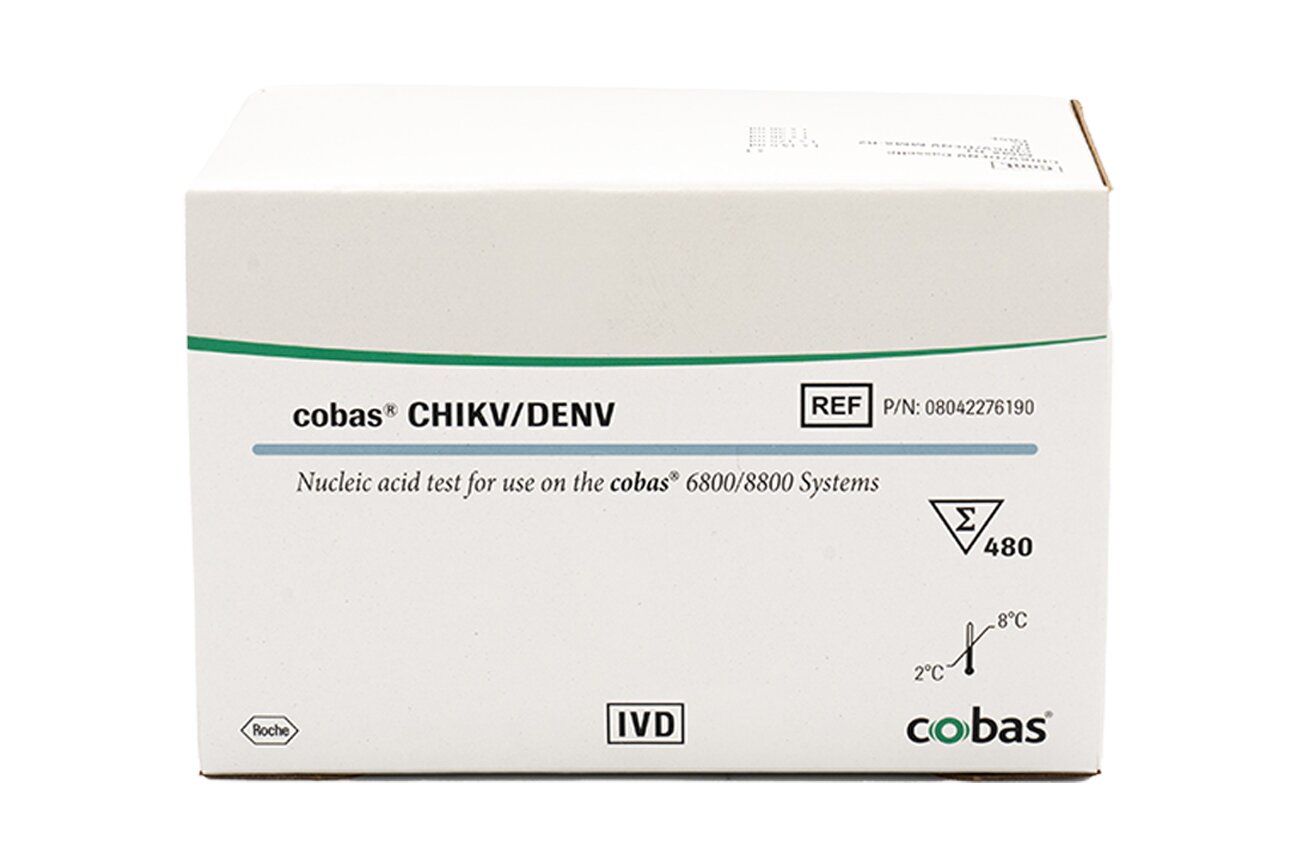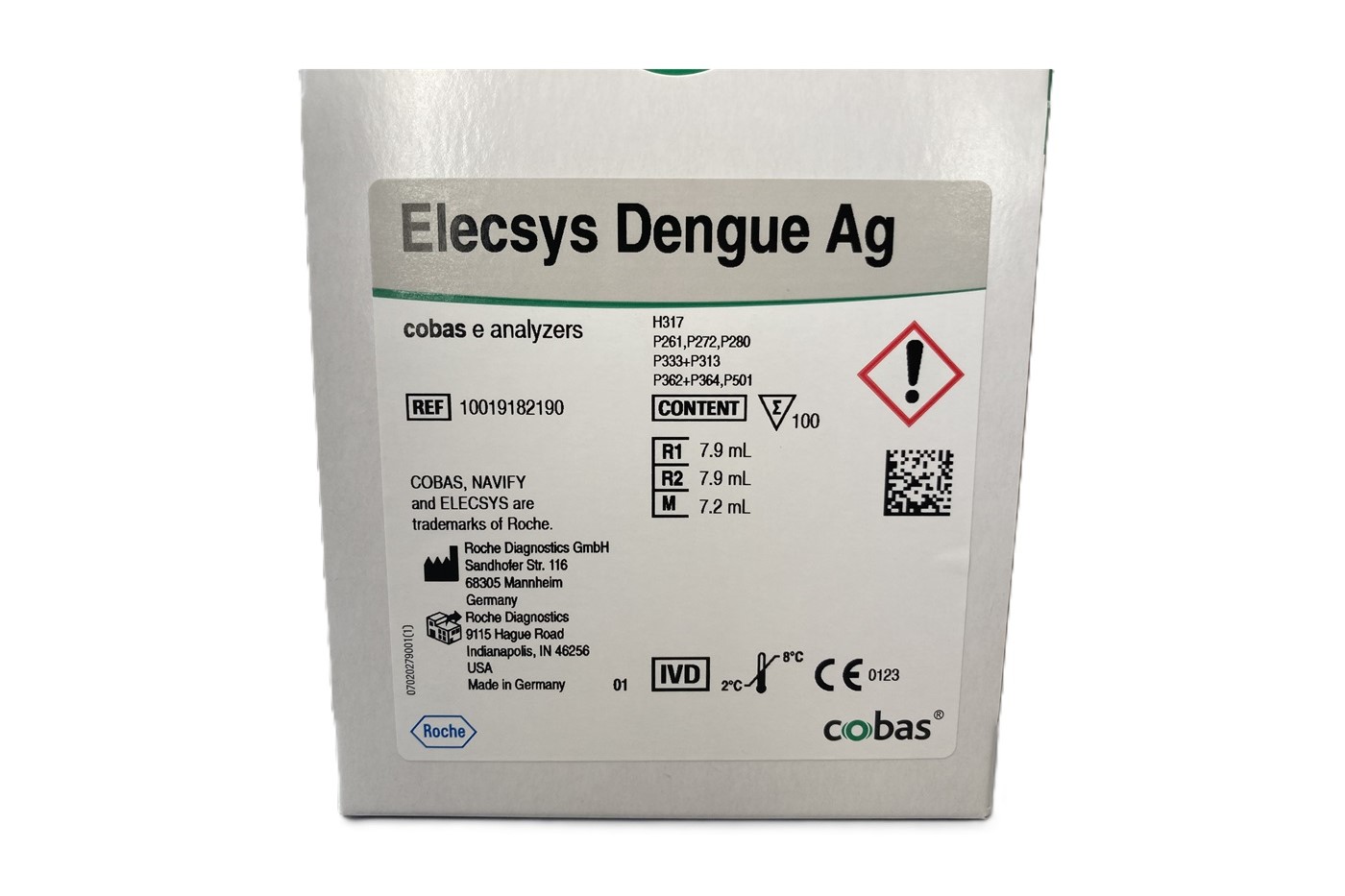For localized information and support, would you like to switch to your country-specific website for {0}?
Shining a light on vector-borne diseases
Delivering impactful technologies that address real-world needs across the patient journey
Vector-borne diseases are caused by viruses, bacteria, or parasites transmitted to humans through vectors such as mosquitoes, ticks, and fleas. Examples include high-burden illnesses like malaria, dengue, leishmaniasis, Chagas disease, yellow fever, and Lyme disease.1,2 These diseases collectively cause nearly one million deaths each year, disproportionately affecting vulnerable populations in tropical and subtropical regions.3
The impact goes beyond human health: mosquito-borne illnesses cost the global economy an estimated USD 12 billion annually, factoring in healthcare costs and lost productivity.3 In 2013 alone, dengue fever accounted for an estimated USD 8.9 billion in global economic burden.4
Driven by globalization, climate change, and rapid urbanization, these diseases are spreading into new regions.1 Timely and accurate diagnosis is critical to support effective clinical decision-making to help reduce transmission and improve patient outcomes.
Roche is dedicated to advancing testing and analytics to combat infectious diseases, especially vector-borne illnesses. With our comprehensive portfolio of Roche immunoassays and molecular tests, we address critical needs across the entire patient journey—from ensuring blood safety to aiding in diagnosis and management.
Vector-borne diseases are responsible for more than 700,000 deaths annually 1
Approximately 80% of the world's population is at risk of one or more vector-borne diseases5, with the highest burden in tropical and subtropical regions, disproportionately affecting impoverished communities. This creates a cycle where poverty and these diseases exacerbate each other.6
Dengue is spread by Aedes mosquitoes and is the most common mosquito-borne viral infection, with the incidence dramatically increasing.7 Roughly half the world's population is at risk, with an estimated 100–400 million infections yearly. The WHO estimates 50 to 100 million cases annually, about 96 million symptomatic, and around 40,000 deaths.7
Zika infected 1.5 million people in Brazil in 2015-2016, declining to under 100,000 global cases per year. It's mainly in the Americas, with about 30,000 reported cases in 2023. Transmission can also occur through sexual contact, blood transfusion, and from mother to fetus. While most have mild or no symptoms, infection during pregnancy can cause severe birth defects.8
Chikungunya puts 1.3 billion people in 110 countries at risk. In 2023, there were 500,000 cases and 400 deaths reported globally. Symptomatic cases often involve severe, prolonged joint pain. Treatment focuses on symptom relief, and a new vaccine has been approved in some regions.9
West Nile is present in various parts of the world. In 2023, the USA reported 2,406 cases and EU/EEA 709. Most West Nile virus (WNV) infections are asymptomatic, but less than 1% can develop serious neurological issues. Treatment is supportive.10
Malaria, caused by Plasmodium parasites transmitted by Anopheles mosquitoes, remains a major global health issue with an estimated 249 million cases and over 608,000 deaths annually, mostly in young children. It's endemic in over 80 countries, primarily in sub-Saharan Africa.1
Lyme disease, a tick-borne bacterial infection, is common in parts of the US, Europe, and Asia. Over 600,000 people may be diagnosed and treated annually in the US alone, with a global prevalence affecting about 14% of the population. Untreated, it can cause severe complications.11-13
Chagas disease affects an estimated 6–7 million people globally, causing over 10,000 deaths yearly, with over 100 million at risk, mainly in Latin America. Often asymptomatic initially, it can lead to severe heart or gastrointestinal problems years later.14,18
Factors like urbanization, population density, human mobility, water issues, and climate change contribute to the spread of these vector-borne diseases.1
Diagnostic challenges in the fight against vector-borne infections
- Overlapping symptoms in many vector-borne diseases, like dengue, complicate diagnosis based solely on clinical presentation, especially where multiple such diseases coexist.
- Limited access to medical facilities, particularly in rural areas with an underdeveloped healthcare infrastructure, contributes to underreporting1
- Diagnostic tests need improved sensitivity and specificity, faster turnaround times, and the ability to simultaneously detect multiple flaviviruses (like dengue, Zika, and chikungunya). Flavivirus cross-reactivity particularly affects the accuracy of antibody tests. Undetected or delayed diagnosis can worsen outcomes and increase mortality and morbidity. Timely diagnosis is crucial for effective disease management and preventing severe complications.
- A lack of awareness regarding disease warning signs can delay healthcare-seeking, which is critical for reducing mortality from severe cases.1
- Continuous training for healthcare workers is necessary. Regulatory hurdles and economic limitations in some regions can hinder the widespread adoption of advanced diagnostic tools.
Roche's comprehensive portfolio of advanced diagnostic solutions directly addresses these challenges by enabling accurate and timely detection of vector-borne diseases, even in cases with overlapping symptoms. By providing tools for improved sensitivity, specificity, and optimized lab workflow, Roche contributes to better patient management, increasing the efficiency and enabling consistent traceability of the results to avoid underreporting or manual errors.
Featured products
Benefits of Roche diagnostic solutions for managing vector-borne diseases
Strengthening lab readiness for emerging threats
A robust and adaptable healthcare infrastructure, prioritizing quality, safety, and accuracy, is the primary defense against vector-borne outbreaks. Emergency preparedness, including scalability and flexibility for rapid response, should be integral to every responsible lab's development plan to mitigate risks from emerging diseases.
Effective diagnostic tools are crucial for epidemic intelligence, surveillance, and investigations. Consistent, reliable, and accurate results build confidence in outcomes and solutions. Enhancing testing efficiency improves the quality of results. Despite stringent safety measures in blood handling, blood and plasma products remain susceptible to diseases.19 Labs require confidence in clinical sensitivity and experience to minimize these risks.
Key attributes of Roche diagnostic tools and platforms are:
- Scalability and integration into existing workflows: Reduces the need for new systems and enables lab personnel to leverage existing expertise, minimizing workload and training needs.
- A comprehensive assay menu: Covers a wide range of diseases—including Zika, WNV, Chagas, Dengue, and Chikungunya—offering broader outbreak detection and preparedness.
- Advanced automation: Limits human error and ensures standardized, validated, and reliable assay results, leading to greater confidence in clinical decision-making.
Protecting blood supplies through reliable screening solutions
Global outbreak support
Roche’s global reach enables labs to rapidly scale their response to emerging threats—crucial for reducing infection rates and protecting blood supplies. This was demonstrated during several outbreaks:
- Babesia: In May 2019, the FDA issued updated industry guidance recommending blood donor screening for Babesia microti to reduce the risk of transfusion-transmitted infections. In response, Roche began screening blood for Babesia—a milestone in improving transfusion safety in affected U.S. regions.20,21
- Zika: When Zika virus emerged in Puerto Rico in 2016, Roche’s assay became the first FDA-authorized commercial Zika test.22 Roche supported local labs by addressing high-throughput needs, reducing turnaround times, and improving preparedness for future outbreaks.
- Chagas disease: As Trypanosoma cruzi—the parasite responsible for Chagas disease—spreads globally, donor screening for T. cruzi antibodies is critical, particularly in endemic regions.23 Roche provides reliable tests to help prevent transmission through transfusion or organ transplantation.
Targeted testing for regional risks
Blood-borne parasites like Babesia and T. cruzi present significant challenges in specific regions. Roche’s donor screening tests are tailored to address these localized threats, safeguarding both donors and recipients.
Ensuring long-term safety through innovation
Roche’s IVD solutions support a safe and sustainable blood supply. As pathogens continue to evolve, continuous innovation and the integration of advanced automation enable future-ready labs to improve efficiency and minimize manual handling in donor testing.
Trusted partner in pandemic preparedness
Roche is a trusted partner, driven by diagnostic innovation and continuous investment in R&D. Our commitment to outbreak control is rooted in proactive surveillance, responsive assay development, and scalable access to reliable diagnostics that strengthen health systems worldwide.
- Proven legacy in diagnostics innovation since 1968, enabling precise diagnosis and informed treatment decisions
- Over 100,000 diagnostic systems deployed globally,24 supporting scalable access to reliable testing infrastructure
- The Global Surveillance Program actively monitors emerging infectious diseases to ensure assays remain effective against new variants
- Extensive portfolio of over 60 CE-IVD assays and over 200 research-use assays from TIB Molbiol enables rapid response to evolving threats25
References:
- World Health Organization. Vector-borne diseases. [Internet; cited 2025 May 21]. Available from: https://www.who.int/news-room/fact-sheets/detail/vector-borne-diseases
- Centers for Disease Control and Prevention. Vector-borne diseases. [Internet; cited 2025 May 21]. Available from: https://www.cdc.gov/vector-borne-diseases/about/index.html
- Odi. Tackling the hidden pandemic: Anticipating and preventing mosquito-borne diseases. [Internet; cited 2025 May 21]. Available from: https://odi.org/en/insights/tackling-the-hidden-pandemic-anticipating-and-preventing-mosquito-borne-diseases/
- Chilakam N, et al. Economic Burden of Mosquito-Borne Diseases in Low- and Middle-Income Countries: Protocol for a Systematic Review. JMIR Res Protoc. 2023 Dec 11;12:e50985.
- World Health Organization. Global Vector Control Response. [Internet; cited 2022 November 28]. Available from: https://www.who.int/publications/i/item/9789241512978
- World Health Organization. WHO_DCO_WHD_2014.1_eng.pdf. [Internet; cited 2025 May 21]. Available from: https://iris.who.int/bitstream/handle/10665/111008/WHO_DCO_WHD_2014.1_eng.pdf
- World Health Organization. Dengue and Severe Dengue. [Internet; cited 2025 May 21]. Available from: https://www.who.int/news-room/fact-sheets/detail/dengue-and-severe-dengue
- World Health Organization. Zika. [Internet; cited 2025 May 21]. Available from: https://www.who.int/news-room/fact-sheets/detail/zika-virus
- World Health Organization. Chikungunya. [Internet; cited 2025 May 21]. Available from: https://www.who.int/news-room/fact-sheets/detail/chikungunya
- World Health Organization. West Nile. [Internet; cited 2025 May 21]. Available from: https://www.who.int/news-room/fact-sheets/detail/west-nile-virus
- Centers for Disease Control and Prevention. Lyme disease data and statistics. [Internet; cited 2025 May 21]. Available from: https://www.cdc.gov/lyme/data-research/facts-stats/index.html
- Project Lyme. The global prevalence of Lyme disease. [Internet; cited 2025 May 21]. Available from: https://projectlyme.org/the-global-prevalence-of-lyme-disease/
- Bay Area Lyme Foundation. Lyme disease facts and statistics. [Internet; cited 2025 May 21]. Available from: https://www.bayarealyme.org/about-lyme/lyme-disease-facts-statistics/
- World Health Organization. Chagas disease (American trypanosomiasis). [Internet; cited 2025 May 21]. Available from: https://www.who.int/news-room/fact-sheets/detail/chagas-disease-(american-trypanosomiasis)
- World Health Organization. World Chagas Disease Day 2024. [Internet; cited 2025 May 21]. Available from: https://www.who.int/campaigns/world-chagas-disease-day/2024
- MDPI. [Internet; cited 2025 May 21]. Available from: https://www.mdpi.com/about/announcements/11298
- Irish A, et al. “Updated Estimates and Mapping for Prevalence of Chagas Disease among Adults, United States.” Emerging infectious diseases. 2022l;28(7):1313-1320.
- Cucunubá ZM, et al. The epidemiology of Chagas disease in the Americas. The Lancet Regional Health Americas. 2024;13(37):100881.
- Chamberland ME. Emerging infectious agents: do they pose a risk to the safety of transfused blood and blood products? Clin Infect Dis. 2002;34(6):797-805.
- Food and Drug Administration (FDA). Recommendations for Reducing the Risk of Transfusion-Transmitted Babesiosis. [Internet; cited 2022 November 28]. Available from: https://www.fda.gov/regulatory-information/search-fda-guidance-documents/recommendations-reducing-risk-transfusion-transmitted-babesiosis
- LymeDisease.org. FDA approves Babesia screening test for donated blood. [Internet; cited 2019 September 24]. Available from: https://www.lymedisease.org/fda-babesia-blood-test
- Galel SA, et al. First Zika-positive donations in the continental United States. Transfusion. 2017;57(3pt2):762-769.
- World Health Organization. Chagas disease (also known as American trypanosomiasis). [Internet; cited 2022 November 28]. Available from: https://www.who.int/news-room/fact-sheets/detail/chagas-disease-(american-trypanosomiasis)
- F. Hoffmann-La Roche Ltd. irp230426-a.pdf. [Internet; cited 2023 April 26]. Available from: https://assets.cwp.roche.com/f/126832/x/469b6bc1c5/irp230426-a.pdf
- F. Hoffmann-La Roche Ltd. Assay menu for molecular testing. [Internet; cited 2025 May 24]. Available from: https://diagnostics.roche.com/global/en/article-listing/assay-menu-for-molecular-testing.html#4



